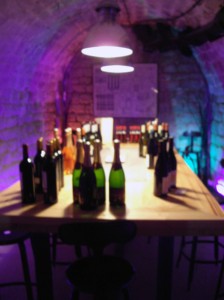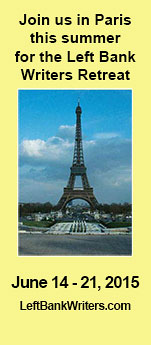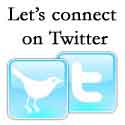One thing that Sarah wants to do while she was in Paris is a wine tasting. I find one that sounds great: Our French sommelier will teach you how to read a French label and how to navigate a wine list. We’ll go through the major French wine regions and the interesting details that make French wines unique.
The tasting takes place in an authentic royal wine cellar in the center of Paris, right near the Louvre, in a cellar that was once a prison–the perfect dark, damp place for a wine tasting.
Sarah and I take our seats at the table, pour ourselves some water and try a piece of French bread as we wait for the sommelier to begin. We will taste champagne, two whites and three reds—perfect because I love white; Sarah loves champagne and red.

The wines we will chug, I mean, taste
Our sommelier talks so fast that his English sounds more like French (we will call him Jacques because we couldn’t understand his name). He had worked at St Jean Vineyards in California for a while. But since then, he has worked at several French winemakers before coming to Paris. When he talks about California wines he put his nose slightly in the air and uses a tone of condescension.
He teaches us about the different regions of wine making in France—very helpful to know. He recommends small French champagne makers–but the problem is that many of the smaller wine makers don’t export. When he gets to the Beaujolais region, he warns against drinking too much of the trendy nouveau Beaujolais or you’ll get a headache.
When reading labels, he points out, French wines are made by domains or chateaux. “I like to buy domains because there are smaller producers under 50,000 bottles per year and they are usually a good value. You won’t be paying extra for the marketing of the wine like you do at the larger chateau labels.â€
One thing I’ve noticed is that when I drink wine in European countries, I can drink a lot more without any effect. “Which types of wine give you the best buzz?” I ask. O.k. not really, I rephrase it to sound a little more mature. “Why is it possible to drink more of some wines without feeling the effects of alcohol?” I ask him. He says it’s because many French wines have lower alcohol content—Americans produces wine with has higher alcohol content due to their production process. The definition of high alcohol wines are wines with 13 percent alcohol and above—reds can be very high in alcohol content.
What are some wine faux pas? Always look the person in the eyes when you toast or it is bad luck and you’ll have seven years of bad sex. Do not chug the wine although you may gargle with it and you will look like a wine connoisseur (plus he told us this is a way to get drunk fast). Hold the glass by the stem. If you do not care for the wine, do not say “This is cat urine!” simply pour the glass into our friend’s glass or into a plant. If you open a bottle of wine and it smells bad–do not drink this wine! Life is too short to drink bad wine!
We taste the wines and evaluate them by color, legs or tears, and fragrance or bouquet. “Actually thees wine has lemon, citrus and grass—can you smell eet?†Sarah and I inhale; yes by gosh there is a little grass in the bouquet. If you want to compliment a wine but you don’t know what to say, just say, “eet is complex.”

This is Jacques after I've had a few glasses of wine
Since we were only catching about every third word of what he says, we simply enjoy the wine. At the end of the tasting, Jacques talks about the future of wine. Actually, he is very very concerned that people are drinking less and less wine. Each year people are drinking about a liter less. His parting message to us is to drink more wine and help the French wine industry. So Sarah and I leave the tasting feeling like it is our moral duty to drink more French wine and we set out for a cafe so that we can help the French economy.


